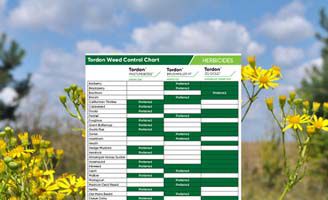Get Brushweeds Under Control This Winter

There’s only one thing worse than lots of brushweeds infesting what would otherwise be productive grazing land, and that’s knowing if those weeds are left uncontrolled, they’ll be even worse next season.
Ian Kirkland has been working with farmers and retailers long enough to have seen this scenario play out more times than he cares to count.
“What inevitably happens is that farmers get set back even further, and their productivity losses compound as brushweeds worsen.”
In other words, the effects of one tough season linger on to make it harder to get back on the right side of the ledger when markets improve.
But the long-standing Corteva Agriscience territory manager says there are ways to help clients move forwards with brushweed control even when budgets are tight and every expense is under scrutiny.
His advice for this winter? “Help your farmers identify where they will get the very best return from money spent on brushweed control – the grazing land that will contribute most to their productivity and efficiency when weeds like blackberry, gorse and broom are removed. It doesn’t have to be a big area.
“Then make a plan with them that will deliver lasting results. If they control a smaller area of brushweeds very well, they’re going to be better off next season than if they don’t spray at all this winter, or worse, spray once then skip the follow up.
“After the first application of herbicide, a follow-up spray has to be factored into the plan. This will enable control of any regrowth in the first 18 months.”
The herbicide itself also makes a big difference, Kirkland says.
Tordon™ Brushkiller XT remains the best-known solution in this category for the same reasons its predecessor formulations were just as widely-used – it’s grass-friendly, reliable, effective and highly efficient, particularly for aerial application.
Labelled for control of both common brushweeds like blackberry, broom and gorse, it’s also approved for spot and broadcast application on costly pasture weeds including ragwort and Californian thistles.
The combination of three active ingredients – aminopyralid, picloram and triclopyr – means farmers are effectively getting five litres of T-Max™ in every drum, Kirkland says.
“Aminopyralid makes a big difference to the reliability of control. The biggest challenge with aerial application is getting good coverage in often difficult terrain, so you need a reliable product to get adequate control from a single application.”
For more detail talk to your local Corteva territory manager and request a copy of our new Brushweed Control Manual.


A quick guide to the control of common broadleaf weeds and brushweeds in pasture.
Download the chart
Delivering a complete suite of crop protection solutions for today’s farmers.
Learn more